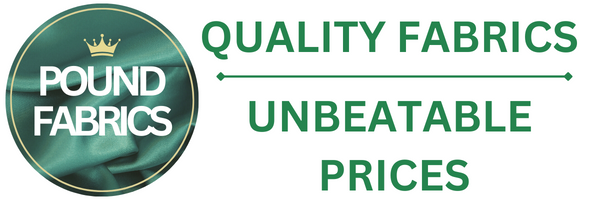
Shirring is a technique which creates a smocked appearance on your fabric using elastic threads on the bobbin of your sewing machine. It may be a little intimidating as elastic threads can be tricky to work with, but shirring is a great technique to create a fitted garment without the need for conventional fastenings or elastic waistbands. This guide has been designed to help you achieve smocking, without getting tangled with elastic threads!
You will need:
- Your fabric or garment
- Thread
- Elastic thread
- Dressmaking scissors
- Universal machine needle
- Sewing machine
- Empty bobbin
Preparing your machine for shirring:
Be sure to use a high-quality elastic thread, winding the empty bobbin by hand. By winding the thread by hand, you avoid over-pulling or stretching the thread and making the bobbin tension too tight. Once wound, thread the bobbin into your machine as normal.
Make sure that you also slightly increase the length of your stitch up to around 3.5mm-4mm.
Basic machine method:
Begin by sewing across the fabric panel or pattern piece you wish to create the shirring on.
When you get to the other side, sew another row approximately 1.5cm away from the first. Make sure that you don't trim the loop of thread at the end of the row (these loops can be trimmed or removed once you have sewn the shirring threads into a seam and they are secure). Repeat for the desired number of rows or the desired thickness of the shirred panel.
Each row will at first appear loose and stretchy but will gather and tighten as more rows are added.
Once all rows are sewn, set them with steam for a neater result. The steam will help gather the shirring even more.
If you find that the process isn't this simple, the best way to troubleshoot is to tackle one variable at a time. Always sample test your fabric first, as this will help you eliminate potential problems without affecting your final garment. Some things that may be altered for results are;
- The machine tension
- The stitch size
- The bobbin screw tightness
Extra tips:
♣Don't use old elastic thread- Elastic thread has a tendency to harden and become brittle if not used. This is because the elastic fibres begin to break down and lose their stretch, becoming hard and unable to their original state after stretching. It is always best to buy a new spool of elastic threads for a new project, unless you use a lot of it!
♣Alter the bobbin tension- If your machine is struggling to create shirring, the first thing to do is to change your bobbin tension by altering the screw tightness. Newer machines often have mechanisms to prevent puckering and gathering of stitches, which is desirable in this case!
♣Smooth fabric flat as you sew- By smoothing the fabric as you sew and keeping it as flat as possible, you avoid creating rows of shirring that are more gathered than others.
♣Back stitch over shirring in seams- By backstitching over the loops of shirring threads, they become secure, thus reducing the likeliness for the shirring to snap and come undone with wear. You can also then trim those pesky loops!
♣Use regular thread above- While you need to use elastic threads in your bobbin, it is essential to use normal, or all-purpose thread in your upper threading and needle, otherwise you'll end up in a stretchy mess.
This is the easiest method for creating tight and neat shirring. This can be used as a decorative technique, or to help your garment fit around the waist and bust, particularly on maternity garments. So, it’s an essential skill to master!
To see our full range of fabrics, please click here.
Make sure to tag us @poundfabrics and show us your creations on Instagram, Facebook and Twitter!
Copyright © 2019 Pound Fabrics. All Rights Reserved











Janice Lamb
January 23, 2024
Thanks for these very clear and informative instructions. I can’t wait to get started as soon as my shirring elastic arrives. Wish you sold red shirring elastic. Hope it doesn’t show on top.